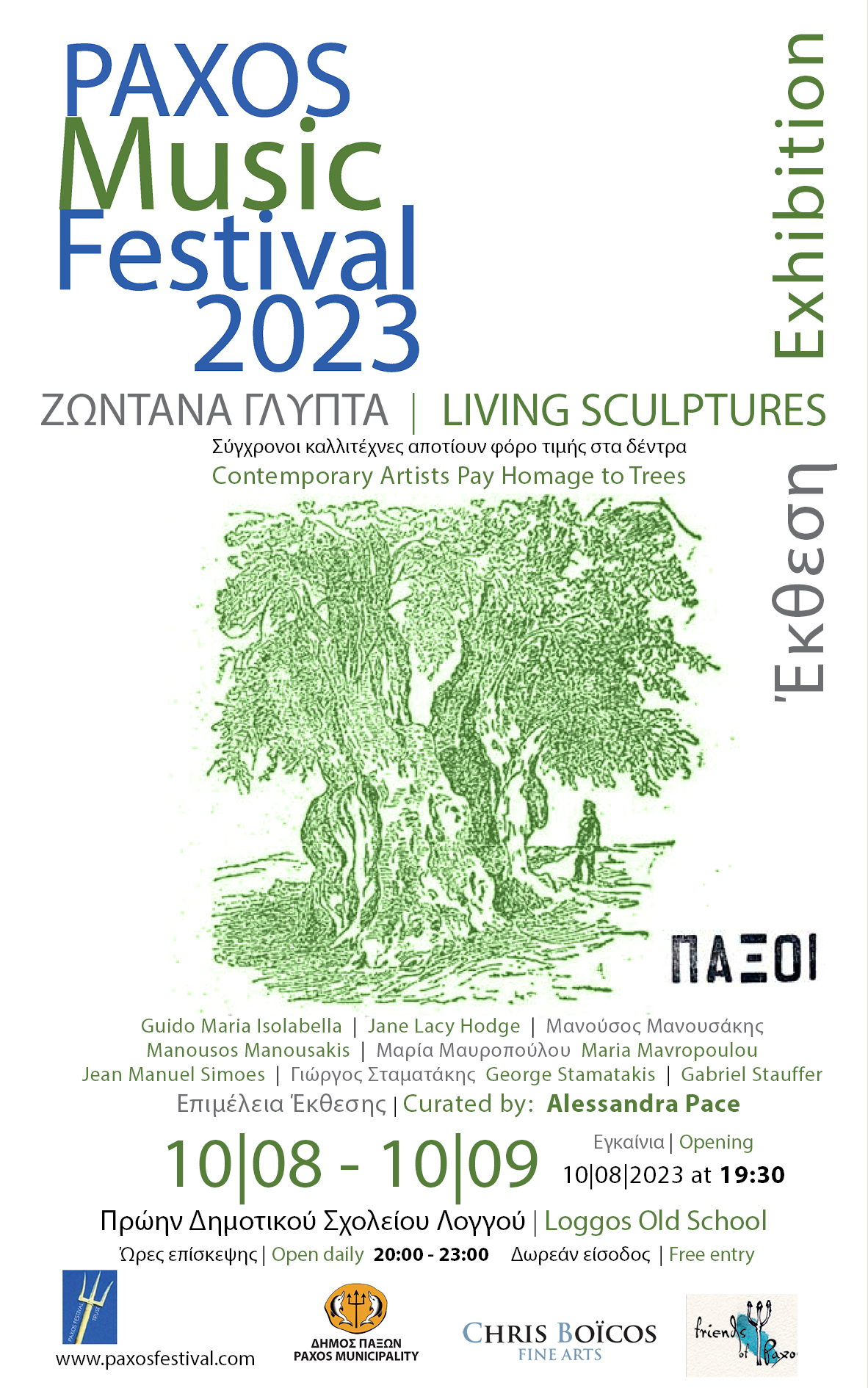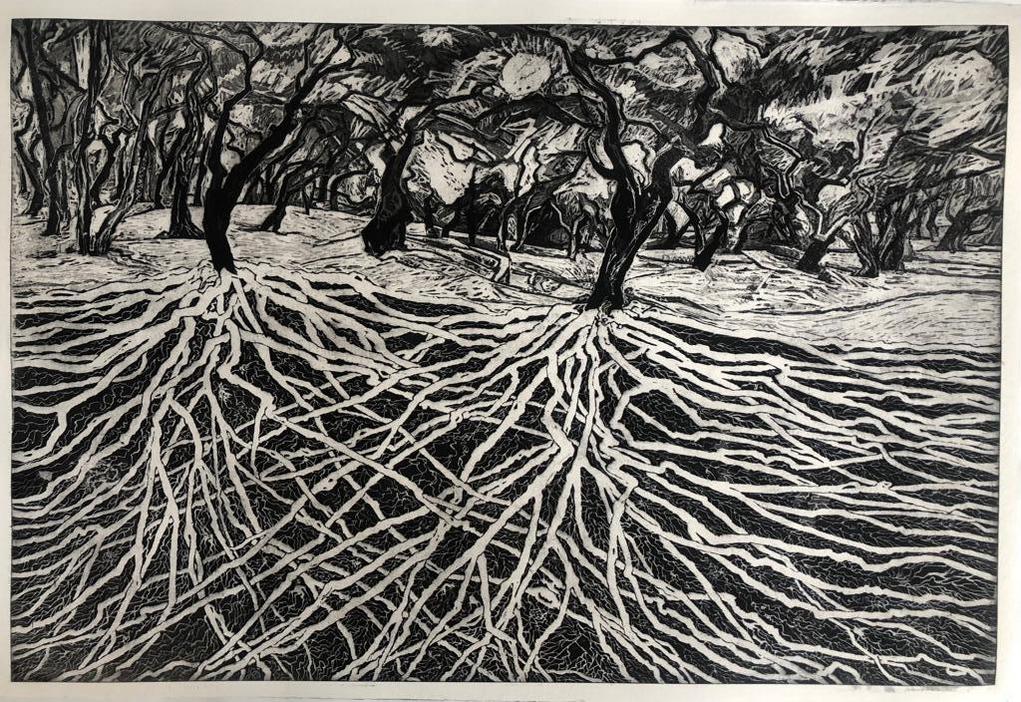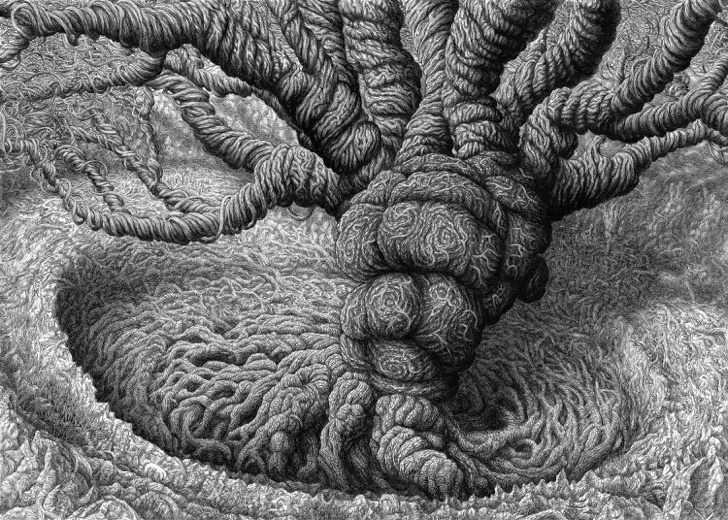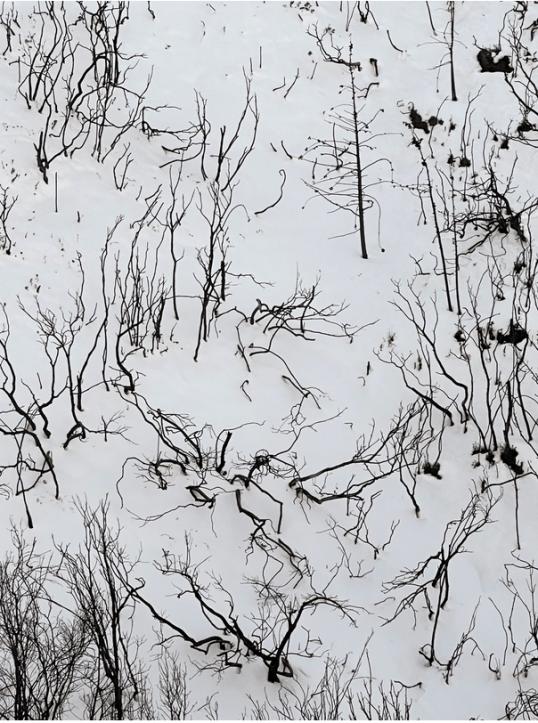Contemporary Artists Pay Homage to Trees

Guido Maria Isolabella
Jane Lacy Hodge
Manousos Manousakis
Maria Mavropoulou
George Stamatakis
Gabriel Stauffer – Acqua Paxos 2017
Jean –Manuel Simoes –Paxos Summer 2017
Curated by: Alessandra Pace
Opening Thursday 10 August 2023, 7.30-11 pm
Old School Loggos, Paxos
Free entry
With the kind support of Chris Boicos Fine Arts and FoP
When trees start hating people’s ingratitude…
The day will come when trees will hate people’s ingratitude and will stop creating shade, swishes and oxygen.
They will take their roots and leave.
Big holes will remain in the earth where the trees stood.
When people understand what they lost, they will start crying bitterly above those holes.
Many will fall inside those holes.
Dirt will cover them.
No one will grow.
Poem by Argiris Hionis
LIVING SCULPTURES
Nodes and contortions evidence their centennial resilience to adversity. A dozen of them survived the ravages of Saracen pirates, outlived scores of generations of humans, and witnessed history unfolding: Norman and Angevin conquests, Venetian domination, French and British protectorates, the fight for independence, the birth of Greece as nation state, Italian and German invasion during World War II. But their struggle for survival is not over. As much decaying due to neglect as bulldozed, or severed to clear sea-views, the olive trees of Paxos — amongst the oldest in Europe — are now threatened by another form of piracy: the rape of the environment perpetrated by “development and financial growth”
If anybody or anything deserves the status of national monument, it is trees, creatures devoid of legal rights. Standing silent and impartial, how many cubic metres of the oxygen we breathe have they generated since birth? They produce the very essence of life magnanimously, indistinctive of race, gender, age and class. Majestic in their six tons wood harness, monumental in their circumference that takes four people with stretched-out arms to embrace, impartial and equanimous, the olive trees of Paxos are living monuments, were they only recognized as such. So far we’ve celebrated the wrong heroes. A change in focus over historic landmarks is long overdue.
LIVING SCULPTURES attempts to instil a culture of care for the environment; to spark a sense of aesthetic literacy, and nurture for nature necessary to create the consensus that will lead to protect the habitat of the small Ionian island, which is being relentlessly eroded. The project aims to single out, map and list as cultural heritage the multi-centennial Paxiot olive trees, and invite artists, composers, writers, and performers to present “tree-specific” works. Artists will interact with silent giants whose endurance and fragility are thought provoking, and seek to recalibrate the notion of human agency in relation to other living organisms. This exhibition is only the first event in a series of many others to follow within the year to come.
Every time we harm a tree, we hurt ourselves. Because a mature tree with a full crown absorbs as much CO2as an individual produces, trees effectively remit our sins in terms of carbon footprint. Plants produce the oxygen we breathe, they temper the climate by releasing water vapour into the atmosphere, and the workings of their roots both oppose erosion and facilitate the absorption of rainwater into the soil thereby replenishing groundwater. Plants can live without us. We cannot live without them.
Alessandra Pacce
Faye Lychnou
From 10 August to 10 September 2023
Open daily 8:30-11 pm
Old School Loggos, Paxos
Free entry

In Living Sculptures, Guido Maria Isolabella presents a selection of photographs from the series Across the Olive Grove, a composition of portraits of some of the multi-centenarian olive trees of Paxos. The portrait of one such tree taken at night has a painterly quality because of its seemingly haptic texture. Emerging from the darkness like an archaic vision, the tree has a sinister and majestic appearance that suggests fragility and resilience. These silent spectators, which have so far outlived pirates and invaders, despots and governments, draughts and gales, which for centuries constituted the bread and butter of every single household and are now mistreated by neglect and greed, in the end, may well survive us too.

Every summer, holidaymakers escape artificial urban landscapes that consist of right angles and straight lines to bathe in the visual and haptic richness of a universe of fractals. The distinctive seascape, geological formations, flora, and fauna of Paxos, formed by curves, spirals, and complex geometrical shapes, pulls the attention into a vortex of details that lead to further details. By depicting tangled branches, labyrinthine root systems, and tortuous tree stems, Jane Lacy Hodge has only just begun to explore such optical conundrums. Tree fractals, like the branches in ancient unkept olivegroves and even more complex underground rhizomes, have structures in common with our blood and pulmonary vessels and neuronal network of our brains. It is not us and them: but we on a shared planet.

Manousos Manousakis’ artistic production consists of ink drawings on paper featuring composite figures and dystopian scenarios, which the often digitalizes and turns into short video animations to add motion and depth. For Living Sculptures, he is presenting three drawings depicting intricate tree branches and convoluted root systems, along with vegetal-human creatures grafted together. The spiraling ramifications and rhizomes in works such as The Tree (2022) feed a vortex that seems to recall the cycle of life and death: both ingurgitating and regurgitating the whirl creates and destroys. Inspired by the Tree of Life —an archetype in popular imagination across the continents, which personifies centennial trees —and themselves a stylistic hybrid between Manga comics and Giovanni Battista Piranesi — an 18th C virtuoso etcher of fantasy prisons —Manousos Manousakis’ work urges the viewers to recalibrate our notions of human agency in relation to other living creatures and the environment we are part of.

out of the snow in March 2022, C-print, 100 x 75 cm
What is the purpose of a photograph? Maria Mavropoulou tells us: “If nothing else, it is a reference point to a specific moment in time, the moment of its creation, and the moment it depicts. It is also about the subject it depicts, the occasion, the person, the act, or the scene it shows. Soon after the lockdown, in the summer 2021, the Krioneri forest close to my house burned down. Devastating wildfires in Greece reduced to ashes a record number of 1.301.239 hectares of woodland in a single year —a bushfire season more severe than at any previous time in history worldwide. A precious heirloom, this photograph preserves the memory of a tragically extinguished forest. At the same time, it also testifies to the resilience of a complex ecosystem that may sprout once more”.

For Living Sculptures, George Stamatakis presents recently developed work consisting of landscape paintings made of indigo on linen, both vegetal materials chosen precisely for their delicate and mutable qualities, mounted as three-dimensional screens. By letting the indigo brew over time, he obtains different stages of oxidation, which naturally produce a wide range of blue, green, and brown shades. Per se variable when exposed to direct light and atmospheric agents, he renders color evermore ephemeral: unless protected, the paintings will visibly change during the owner’s lifetime. Similarly, if we are to preserve it, the environment that inspired the paintings in the first place will have to be taken care of by reducing greenhouse gas emissions. The artist’s growing concern for the environment presses him to invest art with a mission of civic responsibility, by which his landscape paintings strive to instill a culture of care for the environment and other living creatures
